Virgin Family History & Genealogy
Virgin Last Name History & Origin
AddHistory
We don't have any information on the history of the Virgin name. Have information to share?
Name Origin
We don't have any information on the origins of the Virgin name. Have information to share?
Spellings & Pronunciations
We don't have any alternate spellings or pronunciation information on the Virgin name. Have information to share?
Nationality & Ethnicity
We don't have any information on the nationality / ethnicity of the Virgin name. Have information to share?
Famous People named Virgin
Are there famous people from the Virgin family? Share their story.
Early Virgins
These are the earliest records we have of the Virgin family.

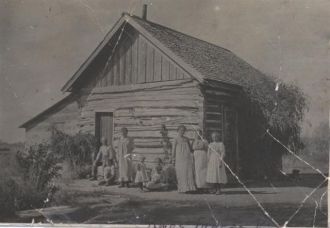




Virgin Family Members
Virgin Family Photos
Discover Virgin family photos shared by the community. These photos contain people and places related to the Virgin last name.

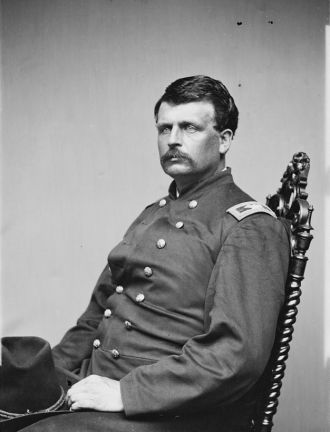
Photo courtesy of the Library of Congress.

Back row: Sarah (1876(; Alice (1879(; Mary (1882)and George (1885)
Grandpa Virgin with Alicia (1897) on his lap
Eugenie (1889); Jesse (1892 died in 1928); and Louise (1894)
Harold (1899) up on the edge of the sofa (Notice that there is 23 Years difference in Sarah and Harold)
Grandma Virgin
Now for some information:
Sarah and Alice moved to Rexburg/Salem when Mother was just a small child.
Their sister, Linda Rose (1880 and died 1882), was buried in St Charles and is not pictured. Her grave is there beside Grandpa & Grandma Virgin in St Charles.
Grandma & Grandpa visited the two daughters and decided to move up there also.
I remember Mother, Alicia, talking about some of their chickens getting away. Wish I could remember what they were called. Mutton chop that was the name of them. They had these fluffy feathers on their legs.
George died from a ruptured appendix in 1903. Grandpa Virgin made the trip to SL to do George's endowment and have him sealed to a lady by the name of Elvira Judy. She had died previously and this was a decision by both parents to seal them to each other.

Amos Moses Virgin, son of George Thompson and Mary Ann Barker Virgin, was born in Marston, England, on January 23, 1854. After his father was accidentally killed being crushed between two cars when the wrong signal was given, his mother was faced with supporting two sons and a baby daughter. Mary Ann Barker had the great desire to go to Zion. On May 14, 1862, she with her two sons, Amos Moses and Nephi Charles, and Mercy Ann, a baby, left England. They with eight hundred Saints on board the "William Tappscott" set sail.
Amos Moses Virgin was now eight years of age, his brother, Nephi Charles, was under six. Even at this young age they with their mother and baby sister walked almost the entire distance across the plains. They traveled with the Horton D. Haight Company. At times Amos and Nephi would get so tired they lagged behind. One time they became so tired they lagged quite a ways behind and would have been lost or devoured by the wolves if the provisions wagon had not stopped and picked them up. His baby sister, Mercy Ann, had died on the plains near the Utah-Wyoming boarder October 6, 1862.
They arrived in Salt Lake Valley October 19 1862. Amos Moses and his family lived in Grantsville, Utah, with some relatives. Two years later they moved to St. Charles, Idaho, in Bear Lake Valley to make their home in October 1864.
Although Amos Moses was but ten years of age, he did everything possible to earn a living for his mother and brother. This was a hard task during the early years of the valley as homesteads were being made. Becoming a fisher and hunter, Amos Moses also became an expert trapper and shipped furs to an eastern market. He made his own snowshoes to run his traps. He also loved boating, swimming, skating, and sports of all kinds.
They were very poor. His mother, Mary Ann, was forced to glean wheat fields while Amos and Nephi fished and trapped. When Amos and Nephi were looking after their traps at the mouth of the creek that emptied into Bear Lake, their feet and clothing would get so cold and wet that they would take off their socks and wade in the icy water and then put their socks back on. They often laid on the ice where they were fishing until their clothing would dry in the sun. They often became snow blind caused by the glare of the sun on the ice and water.
-2 -
On September 27, 1875, Amos Moses married Sarah Francis Merkley, daughter of Christopher and Xarissa Fairbanks Merkley. Making their home in St. Charles, Idaho, near Bear Lake, Amos Moses and Sarah Francis were blessed with ten children: Sarah Francis, Alice Xarissa, Linda Rose, Mary Ann, George Amos, Eugenie, Jessie, Zalia Louise, Alicia Naomi, and Heber Harold.
Amos Moses loved music. He played the violin and sang in the choir. He loved to dance and called for dances. During the time of his stay in St. Charles, he was a teacher in the Sunday School and also a ward teacher. On July 18, 1886, Amos Moses Virgin was ordained a Seventy by C. D. Fulstead. Also during this time a daughter, Linda Rose, was buried in St. Charles.
One Sunday Brother Floyd told Amos' mother that he was going to Salt Lake City on Monday. He said he would bring her some chairs if Amos would catch one hundred pounds of fish to send. After Sacrament Meeting Amos and his mother went to the creek where he caught nine fish. His mother said this was enough so she took them to the house and dressed them. -They weighed one hundred pounds. Floyd took the fish to Salt Lake City, sold them and brought home the chairs.
One time when Amos had saved five dollars for some needed shoes, t2iev aske6 for money to build "--he Logan Temple. He gave the five dollars for the temple and pulled the old shoes together with wire and then went to the logging camp in Logan Canyon to help get logs to build the temple
In August Amos ' Moses Virgin and his wife Sarah Francis moved to Salem,, Idaho, with their four daughters and two sons to be nearer to their two oldest daughters who had married and moved there. There he bought a farm and in the Snake River Valley pioneered again. He worked in ' the office of the Church while he served as a ward teacher.
After he had converted James Inman, his wife and two sons while ward teaching, they joined the Church. Amos Moses was blessed with the gift of healing and was called many times to administer to the sick. His examples and precepts were always worthy of a Latter-day Saint. George A. Pinnock ordained him a High Priest on May 1, 1909. His family is a credit and honor to him and his wife.
Sarah Francis Merkley Virgin died at Fish-Haven December 17, 1939, and was buried in St. Charles, Idaho. Amos Moses Virgin died at the home of his youngest daughter, Alicia V. Howell, in Fish Haven, Idaho, on October 12, 1942. He was buried by his wife and daughter in St. Charles, Idaho.
The following is information from the ship records of the William Tapscott. Amos Moses crossed the ocean, and walked accross the plains with his mother when only seven years old.
Virgin, Amos, 1862, NA, Horton D. Haight, Deseret News Vol. 12 p. 98 microfilm 26589
Virgin, Amos, 1862, NA, William Tapscott, Ship roster on microfilm(s) 175576 25691
Virgin, Levi, 1862, NA, Horton D. Haight, Deseret News Vol. 12 p. 98 microfilm 26589
Virgin, Mary Ann, 1862, NA, William Tapscott, Ship roster on microfilm(s) 175576 25691
Virgin, Mary Ann, 1862, NA, William Tapscott, Ship roster on microfilm(s) 175576 25691
Virgin, Mercy, 1862, NA, Horton D. Haight, Deseret News Vol. 12 p. 98 microfilm 26589
Virgin, Nephi C., 1862, NA, William Tapscott, Ship roster on microfilm(s) 175576 25691
VIRGIN, Mary Ann
Age: 30 Origin: England Occ: Widow
Note: BMR, p.150.
VIRGIN, Amos
Age: 7 Origin: England
VIRGIN, Nephi C.
Age: 5 Origin: England
VIRGIN, Mary Ann
Age: infant Origin: England
Note: "Infant" (BMR).
Ship: William Tapscott
Date of Departure: 14 May 1862 Port of Departure: Liverpool, England
LDS Immigrants: 807 Church Leader: William Gibson
Date of Arrival: 25 Jun 1862 Port of Arrival: New York, New York
Source(s): BMR, Book #1047, pp. 126-164 (FHL #025,691); Customs #610 (FHL #175,576); SMR, 1862 (FHL #025,696)
Notes: ". . . On Tuesday, the packet ship William Tapscott, Captain Bell, cleared with 807 souls of the Saints on board, under the presidency of Elder William Gibson, with Elders John Clark and Francis M. Lyman as his counsellors, and sailed on Wednesday morning. Elder Gibson arrived from Zion in the beginning of December 1859, and for some time travelled through the Mission, teaching and instructing the Saints in the various conferences where his labors extended. Since January 1st, 1860, he has presided over the Cheltenham District. Elder F. M. Lyman, who arrived July 27th, 1860, has been presiding over the Essex Conference, and Elder Clark over the Sheffield Conference. The following elders accompanied these brethren on the William Tapscott -- namely, Elder Samuel Hargraves, late president of the Durham Conference, who arrived September 21st, 1860, Elder William Dallin, late president of the Newcastle - on - Tyne Conference, who arrived August 26th, 1860, and Elder Thomas C. Staynet, from Zion, who have been on missions to this country; also Elders Thomas Liez, late president of the Preston Conference, Thomas W. Rees, late president of the Eastern Glamorgan Conference, Israel Bale, late travelling elder in the Worcestershire Conference, William Shires, late travelling elder in the Leeds Conference, and Joseph R. Morgan, late travelling elder in Herefordshire Conference, who with gladness and joy embrace the privilege of gathering with the Saints. These brethren have all labored with diligence and faithfulness and are released with the blessings of the presidency, and the prayers of hte Saints. Elder H. Whittall, who has labored in this office for some years, likewise sailed with this company, feeling to rejoice at the privilege of gathering with his family to the valleys of the mountains. On Tuesday afternoon, Presidents Lyman, Rich, and Cannon held a meeting on board, addressed the Saints, and organized the company. Good feelings seemed to be enjoyed by all, and the Spirit of God was copiously poured out. May the prayers which were offered up on their behalf be realized in their fulfilment, that their voyage and journey may be speedy and prosperous, till they reach their destination in the home of the Saints. . ."
"Wed. 14. [May 1862] -- The ship William Tapscott sailed from Liverpool, with 808 Saints, under the direction of William Gibson, John Clark and Francis M. Lyman. It arrived safely at New York."
Ancestral File Number: 1P24-MH
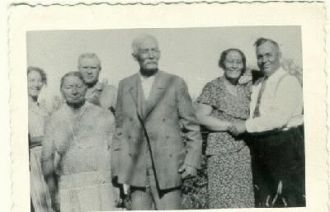
Far left behind Sarah Frances is one of Amos Moses Virgin's older sons with wife, if you know which please advise
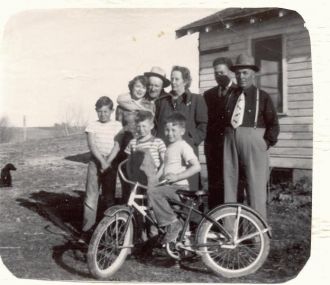
Left to right boys: Melvin, Daune, Andrew
Back Row:Iris, Harvey, Zalia, Amos, and Augustus M Brown
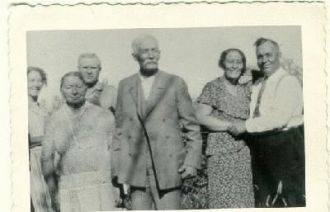
Center Amos Moses Virgin with Wife Sarah Frances Merkley
Far left behind Sarah Frances is one of Amos Moses Virgin's older sons with wife, if you know which please advise
Virgin Family Tree
Discover the most common names, oldest records and life expectancy of people with the last name Virgin.
Updated Virgin Biographies
Popular Virgin Biographies









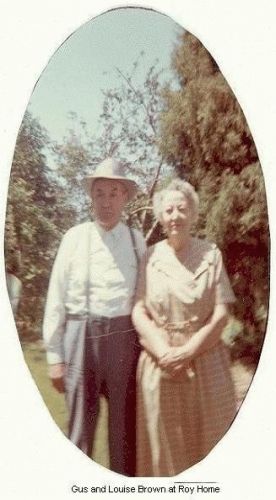










Virgin Death Records & Life Expectancy
The average age of a Virgin family member is 72.0 years old according to our database of 818 people with the last name Virgin that have a birth and death date listed.
Life Expectancy
Oldest Virgins
These are the longest-lived members of the Virgin family on AncientFaces.
Other Virgin Records
Share memories about your Virgin family
Leave comments and ask questions related to the Virgin family.
George Thompston Virgin was the first of our ancestors on the Shirley line to accept the gospel. He was married to Mary Ann Barker on September 19, 1852. They lived in Marston, Bedfordshire, England.
George had actually been working in a church in England. George accepted the gospel first, and asked Mary Ann to go and hear the elders. Mary Ann was satisfied with her church, but she did have some unanswered questions. George told her, “You go visit the cottage meetings and I think they can explain these questions. She came to accept the gospel too.
When they joined the Mormon Church, the ministers had him discharged from his work there. And they were severely persecuted thereafter. They had to begin walking down the middle of the streets because the contents of vessels were dumped from bedroom windows and were poured on them if they walked along the sidewalks.
After his dismissal from the church work, George went to work in Birmingham where he was put to work on the railroad, in a tunnel. There was a double track. One night as he was working in the tunnel, the train came along and passed him. When he unsuspectingly heard one coming again, there were no lights coming, so he stepped back on the track where the train had just passed. They had turned off the lights of the train on this track, and backed back along the track. He was injured and died soon after. Grandmother never saw him again. He lived long enough to verify that there were no lights and no signals of warning given to him. [His family long believed that the death was not accidental.] He died 30 December 1861. He was buried in Birmingham, England.
He and his wife had four children: Amos Moses, Nephi Charles, Heber George. He never got to see his infant daughter, Mercy Ann, as she was born soon after George died.
While his life was shortened by this tragic death, he left a testimony of the gospel through his willingness to give up everything and endure persecution for the sake of the gospel.
Mary Ann Barker was born 25 July 1831, in Marsten Moretain, Bedfordshire, England.
She later liked to tell people she was born one year after the church was organized.
She married George Thompston Virgin, 19 September 1852. He worked in another church in England, but accepted the gospel. He encouraged Mary Ann to go hear the elders. While she was satisfied with her religion, there were some questions she had unanswered. He promised her they would be answered.
She and her sister Mercy fasted and prayed before going to hear the elders. The speaker had prepared a speech, but said, “I can’t keep to my subject.” Mary looked at Mercy, and Mercy looked at her. They decided to pray again silently, and he began to talk on the subject they had been praying about, and explained the subject to their great satisfaction. He and his companion also explained other scriptures which the sisters’ ministers could not explain.
They accepted the gospel, and soon faced severe persecution. They found they had to walk in the middle of the streets because the contents of vessels from above were poured out on them if they walked along the sidewalks. Also, her husband was discharged from his work at the church. Then, Mary Ann’s husband was eventually killed when a train without lights or a signal backed over him in a darkened tunnel. The family always felt this was not accidental.
Mary had born three sons, though one son had died, and then a baby girl was born shortly after her husband was killed. The minister of her former church tried to get Mary Ann to come back to church and sing in the choir. He promised to see to it, “I got help to educate my children, and also he would see that I got a dress for a year or two.”
Instead, in May 1862, the widowed Mary Ann, her two sons and her infant daughter, Mercy, took passage on the ship “William Tapscott, and sailed from Liverpool for America. Francis R. Lyman and other leaders were on the ship with 378 other Saints.
They arrived safely, The Saints all traveled together as far as the Missouri River. There, Mary Ann prepared to cross the plains in the Company of Horton Hiatt. Amos Moses walked and helped prod the oxen.
When they reached the Wyoming/Utah line, a fever struck the company. Mary Ann became so ill she could not care for her baby. There was a young man in the company named Ephraim Barton, who took care of the baby for her. Mr. Barton and the baby both took the fever and died the same day, and were buried in the same grave 6 October 1862.
The company arrived in Salt Lake City 19 October 1862. Mary Ann and her two sons went to Tooele, Utah, to where her sister, Mary Keetch had immigrated. They stayed there with her sister about two years, then moved to St. Charles, Bear Lake, Idaho.
Eventually, she acquired ¼ of a city block, about 2 ½ acres, where she lived in a neat two-room house. At first she had a dirt roof, but later it was replaced with lumber. Her house had a good red pine floor, which she kept scrubbed clean and smooth. The rooms were good sized, with an upstairs. She also owned a piece of meadow land in the “bend of Big Creek.”
Amos aided his mother by fishing and trapping. After he grew up and married, he and his wife lived with his mother until his first daughter, Sarah Frances was born. They moved into their own house the next year
Mary Ann had a good voice, as did Amos Moses.
She was also very fond of flowers, especially nasturtiums and asters.
She eventually moved to Sugar City, Idaho, with many of the rest of her family.
Sarah remembers as a child hearing her Grandmother Mary Ann, Mercy and her family, and Sarah’s father, Amos, singing Christmas carols, They also sang with gusto English songs such as “Brittania, Brittania rules the waves, Brittains will never be slaves.”
Mary Ann made yards of beautiful lace, which she sold to sustain herself. She made it from English linen thread. Her great granddaughter, Jennette, and others could remember vividly the pillow lace she had spent so many years making and selling. Some of it was purchased by the Queen of England. The pieces of lace which has been inherited by her descendants is greatly treasured.
Jennette also remembers visiting her great grandmother Virgin. She was always there reading her scriptures. She used them as she taught Sunday School.
As Sarah Shirley said, “Grandmother wasn’t rich, only in the reading and study of the scriptures and the church works. She had Parley P. Pratt and Orsen Pratt’s books, Voice of Warning, etc. She could quote Isaiah and other prophets. It was hard to get away from her, she was so anxious to tell us grandchildren about what was coming in the last days.
Mary Ann she lived in a small home behind her grandson, Charles, until she died in Salem, Idaho, January 14, 1922. She left a great heritage of faith and courage to all her descendants.
There are some things, which stand out in my memory of the times I used to stay with her after my brother Charles (Nephi Charles Virgin born 5 Jan 1878) got married, Charles lived with her until he was married, my brother Lee (Lehi Sidney Virgin born 16 Aug 1887) was her favorite grandson and my sister Eva (Eva Honora Virgin born 11 Nov 1893) was her favorite granddaughter. But Eva didn’t like to stay with her every night so one of the others had to stay with her.
She had a bolster for the head of her bed, filled with feathers or something solid to keep the bedspread straight and looking good on the bed. A woven carpet on the floor which was taken up each Fall thoroughly cleaned, fresh straw put on the floor then the job of stretching the carpet tight so it would reach from wall to wall and tacked down with tacks (carpet tacks) and it was good until the Fall cleaning time again. How I loved to lie on the newly stretched and clean carpet and listen to the ticking of the large clock on the wall and the swinging of the pendulum to and fro as it ticked off the minutes, then the striking of the hours.
Grandma had two brass buckets, one a little larger than the other. They would get stained either from water of just general use. She would mix some vinegar with a little salt in it polish them with a cloth, then rub them to a shine, I would help her they would stay shiny for a long time after such a cleaning.
There was a row of cottonwood trees along the sidewalk just outside the south fence; Grandma would gather leaves from these trees, boil them in water, drain off the water then put material in she wanted dyed and they came out the prettiest, brightest yellow one could ask for; To set the color so it was permanent she took the wood ashes from the stove, stood them in water over night, drain the water and the color was set, or Permanente so it wouldn’t fade.
A small patch of thimbleberries grew just west of her house, she called them that, they were small replicas of raspberries, but the taste was like nothing I have never tasted since. A most delicious taste which when made into jam couldn’t be excelled anywhere.
When we were small she wouldn’t’ allow us kids in the patch for fear of breaking the tender twigs, as we grew older we helped her pick them. How delicious they were in tarts, which she used to make often. I have never tasted any thimbleberries since leaving St. Charles.
Uncle Amos (Amos Moses Virgin born 23 Jan 1854), Fathers older brother had moved to the snake river valley early in the 1900’s, they liked the country so well that Father and Mother (Nephi Charles Virgin, and Cecily Hibbert) took a trip up to see if they would like it. They did, and in the Fall Father returned to Salem to buy a place so we could move in the spring. He put $500.00 Dollars down payment on a place in North Salem which was covered with snow at the time, when the spring thaw came, my brother Jay (Jehu George Thompston Virgin born 3 Apr 1886) found that it was just a swale, no good for farming. Mr. Larsen, that Father was buying it from refused to refund the down payment although he knew he was wrong in selling the land for farming, so father just lost the $500.00.
Father then purchased 40 acres south of Sugar City, all good land, 20 acres up near the canal and 20 acres a little southeast of it facing the east west road, “Moody Road”
Then Father sold our property in St. Charles. Charles my oldest brother, sold his, and Grandmother Virgin sold hers, and we all moved to Sugar-Salem vicinity in the Snake River Valley. The land was good for raising any farm products. We left St. Charles 5 April 1907. A railroad boxcar was hired at Montpelier, the nearest R. R. and household furniture, and goods, horse and cows were loaded and we left Montpelier April 6th, my 16th birthday.
When the people of St. Charles found we were moving they gave us a big sendoff, a big banquet in the Church, the only hall large enough, a band concert across the street from our place, and all said we would be missed and didn’t like to see us go, we disliked going as much as they did, but we know it was for the best.
We didn’t know any up there, only Uncle Amos’s family and they belonged to the Salem Ward, and we were in the Sugar City ward. Brothers Jay and Lee had been up there before to help Uncle Amos as he had no sons, his oldest son died in 1903, a young son was 4 years old at the time, so help was needed badly with the ranch work; so our boys knew a few young people in Salem. However it didn’t take long to get acquainted by going to Church and taking part.
Father was a friendly disposition and became active in the affairs of the ward, there were some lonely evenings, but we would gather around the organ many times, and I would play songs we knew, and it wasn’t so bad after all. Jay was about 21 and Lee close to 20 so their interest were mostly elsewhere. George was the older brother and Harold the young brother.
Sugar beets were raised on part of the land, grain and alfalfa on other parts and always a garden for vegetables.
Grandma used to make English pillow lace before we moved to the Snake River Valley in 1907. It was beautiful, she made her own patterns and would sell it for as much as $45.00 dollars a yard depending on the width of the lace which could be ten or twelve inches wide, there could be insertion to match. This lace was made on a square pillow she had stuffed real full; the pattern she had made was pinned at the four corners onto the pillow. Punching pins through rather heavy paper in the designs she wanted to make made the patterns. There were many beads and rings. She had dozens of bobbins made of bone about five inches long, about three eights of an inch thick, near one end was a place grooved out to hold thread, size sixty or a hundred, and near the other end of the bobbin a hole to guide the thread. There was a small wire ring attached to the opposite end where the thread was as a little weight to hold them in place better, then she would throw one over another close to where she was working and secure each thread in place with pins and work the pattern. That way all the way until she had the desired length.
She made narrow lace the same way, which was much cheaper. She tried to teach us how to make the lace, but kids like us weren’t interested. (Why can’t children have a little more sense?) She and her sisters learned this art in England while they were quite young. The young girls there had taskmasters and had a quota to meet, if they did not they received severe punishment; but we kids weren’t interested. However I prize highly some small pieces of her lace and keep them to remind me of what I could have learned.
Grandma always had a place for everything, and everything should be in its place, she stressed so much, that “I like to have things be in the same place so I can find them in the dark if I have to.”
One thing I used to enjoy at her place was the Chamomile tea she used to make. This herb grew profusely around our homes in St Charles. We gathered it and it could be used green or dried; that with bread and butter, tea sweetened and some cream added made a delicious meal.
One thing that always bothered me and the others who stayed with her nights was sometimes she asked what we would do if she should die in the night, this wasn’t very good for
This couple-in their early twenties when they heard, believed and embraced the Gospel plan, baptized in eighteen fifty-four, they started saving as never before. Amos, Nephi, Heber and Mercy Ann were the choice spirits sent to them to go to America was their goal, so labored long with whole heart and soul. They would be free from taunts and jeers from those who had been their friends for years. When young, Mary went to school, took a course in Belgian lace making, which was a source of earning money for more things needed, through her busy life she succeeded. But before they could complete their plan fate took matters out of their hands. A tragedy! Little Heber died! How could their dreams now be satisfied? When idle, George looked, tried hard every day at last, went to the railroad, there was good pay. December 18, ‘sixty-one, Mercy was born. They could get no help; George had to stay home. When he felt Mary was able, stronger, he said, “I must go; I can’t stay home longer.” She pleaded with him not to go today; she told him her dream; she had seen him killed. “That was just a dream,” her heart was not stilled. Soon two men came to bring the news, she said, “ You needn’t tell me; my husband is dead.’ She told of her dream, how she begged him, “Don’t go! “In sad, sobbing voice, soft and low, with three small children for which to care, without her husband, how would they fare? How could she enough courage find, to go and leave those loved ones. But she was certain what George would say, “You must go on; there is no other way.” So Mary, a widow at thirty-one made up her mind what had to be done. With children in bed, she worked early and late at her fine artwork, she had set a date. There was no trouble selling lace she made, nor any dispute over price they paid. Mary and children went aboard in May the ship William Tapscott, and were on their way. Eight hundred eight Saints were on the ship; all seemed anxious to make the trip. The ship, under direction of William Gibson, John Clark and Francis M. Lyman. Mary was weak; her health wasn’t good, so couldn’t care for the baby, as she should. On board, Ephrium Barton, a fine young man loved, carried and amused small Mercy Ann, giving her mother more time to rest, for the long ocean crossing and the trip west. Safe in New York Harbor at last, the long tiresome sea voyage was past. About two hundred Saints stayed in the east; worry of reaching America ceased. The sixth wagon train carried ill and weak across the plains to the “Haven they seek”. Boys and those able walked most of the way, at night they were weary, no thought of play. *October 6th was Nephi's sixth birthday, at the Wyoming, Utah line, there were two deaths today. Thirty Saints died and were laid to rest along the way as they traveled west. Among them so near the journey’s end were small Mercy Ann, and Ephrium, her friend. Wrapped in one blanket, placed in one grave; soon wagons rolled on, precious time to save. At all graves a hymn was sung and a humble prayer to guard from disturbance those buried there. Rocks covered graves, if enough were around, or large chunks of wood, where they could be found. Not many of our early Pioneers faced future ahead without some fears. Weary from traveling and all the grief they were ready to rest, what a relief! Entered Salt Lake Valley in 1962, in late October, the trip from Liverpool England and the long trek on plains was finally over. Two years they lived in Grantsville, a town, small, quiet, in which to settle down. Mary brought bobbins, pins and patterns with her, so she could start work in early November. The boys tended a small flock of sheep, didn’t earn much but helped with their keep. President Brigham Young called Mary to go with President Charles C Rich to Idaho with others to help settle Bear Lake. . They traveled and stopped at the north end of Bear Lake, called it St. Charles, their leader’s namesake. Homeless again in the fall of the year, no report of a welcome, nor even a cheer. With their families settled, men looked around to explore the valley, and what kind of ground. Sage-covered land was good, when cleared to raise vegetables, and other food. They planted crops in early spring, anxious to see what the season would bring. Women gleaned grain after reapers each fall in harvested fields once golden and tall. The boys, Nephi now eight and Amos ten, fished in creeks, lake, and trapped wild game. They were happy and ready to try, and found customers willing to buy. The brothers fished and hunted together, in winter’s snow or summer’s hot weather. Mary soon busy with her special art, always ambitious, she did well her part. Rich ladies from Montpelier and all around bought, the only place such lace could be found. Lace, I remember, was four inches wide with a beautiful scallop on one side. Pins were used to leave openings in lace, workings on patterns, were easy to place. There was plenty of wild meat; rabbits and wild fowl always a treat. Church was the center of life for the three, programs, musicals, and baseball, all free. The boys grew up and became fine men, honest and respected citizens. Each married and raised a fine family, lived in St. Charles for years peacefully. The valley was beautiful but too small for growing families to support them all. Amos and family were the first to go to Snake River Valley, still in Idaho. They settled in Salem, southwestern part liked the wide-open spaces from the start. A few years later, Nephi, Charles and Mary knew the best thing for them was to go there too. They sold homes, and chartered a car; there were many things to be moved so far. After forty years, Mary moved again; followed her families; she didn’t complain. Charles built her a cabin near his own, cozy, comfortable, her last home. Knowing all her families were near she passed away, her ninety second year.1907 1922 Even after all the trials of the past, her testimony was strong to the last, to Gospel principles and its truth, embraced long ago while in her youth. Omitted from this saga of the past are names of Mary’s sons, true to the last: Amos - married Frances Merkley, a good helpmate through life; Nephi - Cecily Hibbert, a good mother and wife. Both content with a Pioneer home, both happy to have a home of their own. What is praise for one is praise for the other, these dedicated homemakers wives and mothers.
A little more history:
Charles was the oldest grandson of Mary Ann Barker Virgin, son of Nephi C. Virgin and Mary Ann Pride Clissold. Grandma raised him with his father’s help after the couple separated when Charles was very young. Howard D. Haight guided the sixth wagon train.
NOTICE IN AN ENGLISH-Married Sept. 9 1852: George Thompson Virgin, 21, son of Samuel Virgin and Alice Keep married Mary Ann Barker, 21, daughter of Thomas Barker and Elizabeth Thompston. Witnessed by William Virgin and Tyler Butt Thomas Tylecote - Rector.
This history was sent to me by Olive Virgin Johns from Gridley, CA on 8 Dec 1986.
Followers & Sources


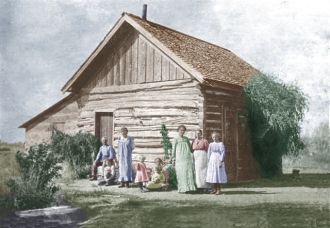
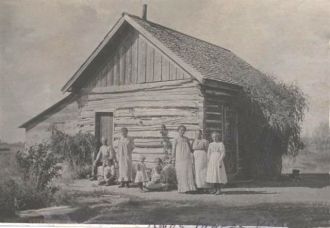
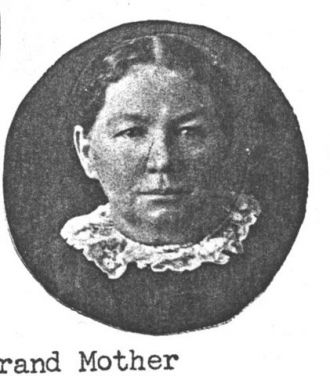
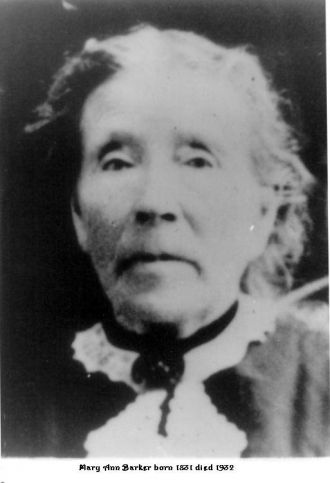


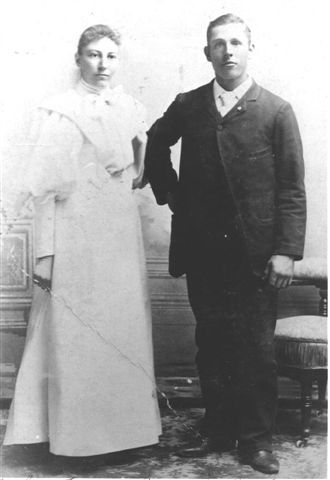


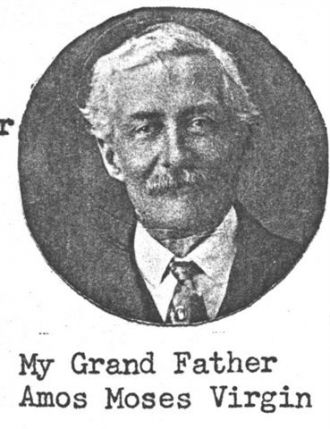
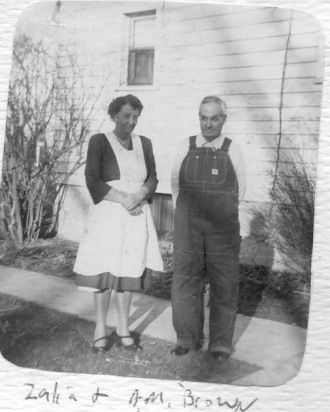
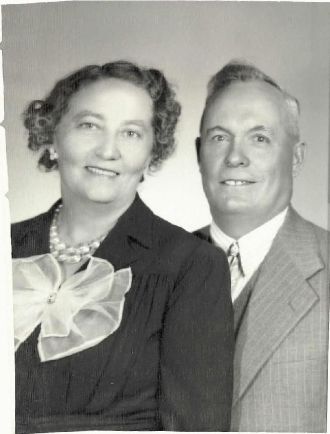
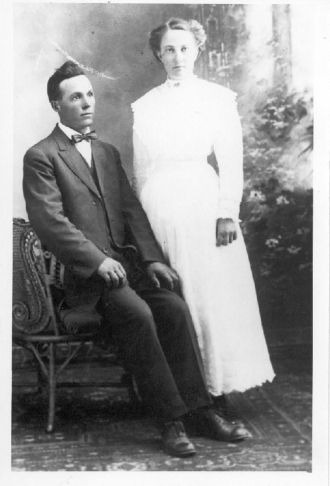
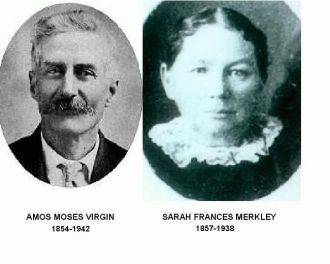
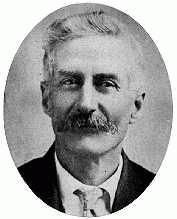
[Amos Moses Virgin was born January 23, 1854, in Marston, Bedfordshire, England. After the family joined the church, they experienced a great deal of persecution and had to move to Birmingham to escape. But there, his father was killed in a mysterious accident at night by a locomotive which ran over him in a tunnel. He lived long enough to say that the locomotive had no light or signal on it to warn him of its approach. The family always felt it was a part of persistent persecution against the family for joining the church.
In May 1862, as a boy of twelve, Amos came with his widowed mother, a bother and a baby sister across the ocean to America. They sailed out of Liverpool on the William Tapscott with 378 other Saints. On their ship was Francis M. Lyman and other church leaders.
Amos told of reports on shipboard that a shark was following the ship, and he was allowed to go and see it. He also saw the ocean nearby covered with a large school of porpoises. There was a superstition among the ship’s crew that a death would occur or a bad storm would come in a day or two because of this sighting. A terrible storm did come later which broke down the main mast and the people were locked in their various decks. [They still believed this was just superstition.]
When they got to New York, they continued on with the Saints, and eventually walked on their way to Utah. Amos’ mother became very ill on the journey, and his baby sister died. Thirty people of this company died on the journey. They arrived in Utah on 19 October 1862.
After arriving in Utah, the family settled in Tooele, living with his aunt. But after a year, they moved to St. Charles, Bear Lake, Idaho. Amos helped his mother sustain the family there by fishing and trapping.
When grown, on September 27, 1875, Amos married Sarah Frances Merkley. Together they had ten children, the oldest was our ancestor, Sarah Frances Virgin Shirley.
Amos had never had the opportunity to obtain an education. But desiring learning, he organized study groups among the married couples in his community. They met in the Virgin home. They would read, discuss, and try to improve themselves intellectually.
He participated in other community projects too, which included, “wood hauling parties.” They went up into the timber and cut trees. Then they cut the wood and piled it in the public square in front of the school house. A day would be set for sawing and splitting the wood. Everyone would join in. That night, when the work was done, the whole town would join in a public dinner and dance. The entire wood supply was donated to the school for winter fuel.
After their daughter married James Frederick Shirley, and moved to Idaho, the Virgins decided to move there too. So in 1899, Amos and his wife, Sarah, along with their other eight children, bought a big 160 acre farm on the West side of his daughter. The properties were separated by a big canal and the main traveled road. Another daughter and husband had also previously moved to the area.
The path to the Virgin home was remembered by the family as being bordered with flowers of every kind. But their house was old and made of logs. These were pioneering families of the Snake River Valley.
The families enjoyed being together, especially their holidays. When they would spend Christmas at the Virgins, Amos, who had an organ with a tall upright back on it, and also a place to put a kerosene lamp, would play the organ and all would sing Christmas songs together. They rotated as to which house they celebrated holidays and birthdays. They held large family celebrations until the families grew so large they could not accommodate all of them in one house.
Amos truly loved music. He not only played the organ, but the fiddle, a Jews harp, and a harmonica. They held youth dances on some Saturday afternoons, and Amos would always be on hand to lead the marches and to call for the square dances.
Amos was a good honest man. His farm was large, and having no boys to help him, his girls often helped with the farm work, such as cutting and raking the hay and grain.
When winter came and the children could no longer walk to school, Amos would hook his team on the bobsleigh, with boards on each side for their back to lean against. Then he put some covers over a layer of straw, in the bottom of the sleigh, for the children to sit on, and additional quilts to pull around them, or even over their heads. On real cold days the children would find some hot bricks under the covers to keep their feet warm.
Always, because church was an important part of their lives, the family leaders would take turns each Sunday taking the families to Sunday School, or to meetings or entertainments of any kind. They always worked together as a team.
Amos had a good voice and loved to sing. His children and grandchildren remember going to his house and hearing him and his wife and others sing, “Come, Come Ye Saints,” “and “Brittania, Brittania, rules the waves, Britains never will be slaves.” They sang many other songs too. But these two were favorites.
He died 12 Oct., 1942, in Fish Haven, Idaho. Before he died, he did temple work for his parents, grandparents, and others. He died faithful to his covenants.